This Week's "What the ... ?"
Aaron Palmateer of Harrell’s texted the picture below to me this morning and wondered if any insect can cause the problem observed.
Looks to me like a potted woody species covered with rice hulls in an overwintering house or hoophouse. The bark of the affected plant appears to have been completely stripped off. Branches were clipped and strewn all over the place.
What could this be?
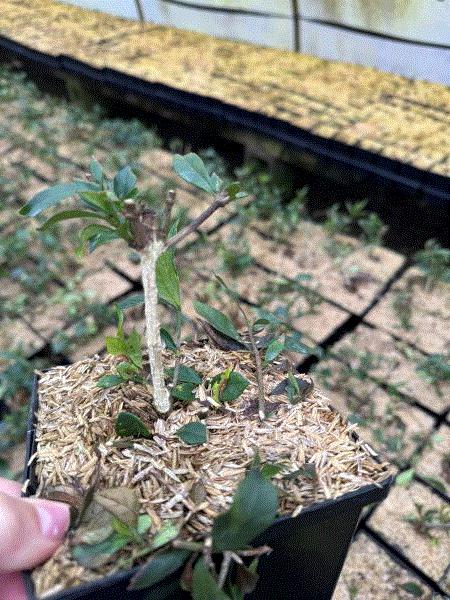
Mysterious Bubbles From Last Week
In the last newsletter, I asked for your help in identifying some bubbly messes I found on the southern red oak trees in my yard. Thanks to Kevin Chase of Bartlett Tree Experts (responding all the way from Bartlett’s office in England), Karen Doyle (aka Gardening Angel), Sandy Feather of Penn State Extension, Phyllis Gricus of Landscape Design Studio, David Loysen of Shaw Hill Nursery, Caryn Michel of Overdevest Nurseries, Linda Labinski of Centerton Nursery, Danny Lauderdale of North Carolina State University, and Nicole Sanchez of Oregon State University. Y’all really love me!
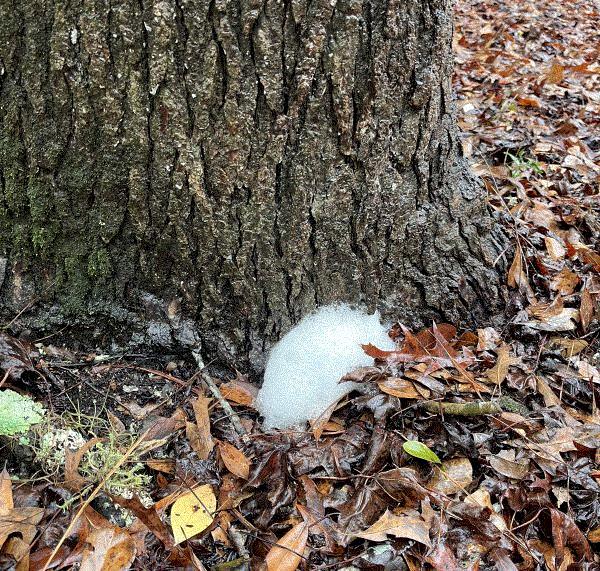
The diagnoses or votes from the Council of the Wise split right down the middle—it’s either slime/alcoholic flux or soapy tree. Soapy tree? I’d never heard of that before! As it turns out, “soapy tree” isn’t a made-up term. It’s also known as tree suds or (more scientifically sounding) stemflow mixing. I like “soapy tree” since it’s descriptive.
What do I think it was? I think it’s soapy tree. The bubbles looked bigger and clearer than what I’ve typically seen produced by alcoholic or slime flux. The bubbles didn’t stain the bark or come out from some cracks or holes. Also, they disappeared soon after the rain stopped, instead of just oozing for days like alcoholic or slime flux.
A distinctive characteristic of slime flux or alcoholic flux is the smell. I didn’t try to sniff the bubbles because that’ll require me to kneel by the trees or hug the trees in plain view of my family. My wife and her dog already wonder about my mental state ...

How Do Trees Blow Bubbles?
The Council of the Wise directed me to two articles explaining how and why trees blow bubbles. The first article is by Erik Draper of The Ohio State University and the second article is by Clint Mautz of Laurels Preserve Steward.
As Clint put it, soapy tree is “a visual representation of a process called stemflow. Stemflow is the act of water flowing over the exterior of a plant’s trunk or stem.” There is a scientific term for water flowing down the trunk of a tree. Some scientists developed mathematical models for transportation of water and salts in stemflow through the topology of tree bark. I like math, but not that much, so y’all can read the scientific article on your own.
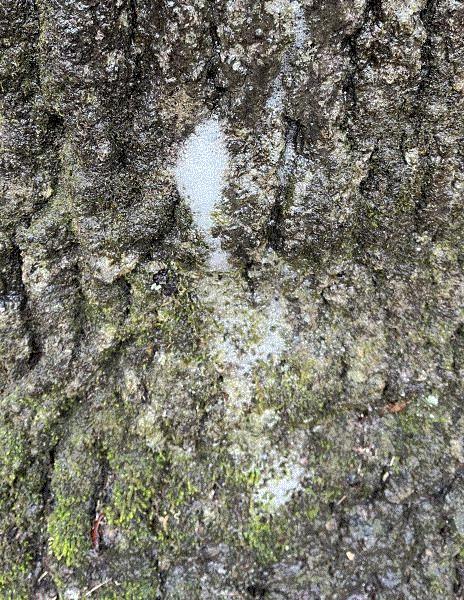
Anyhow, soapy tree occurs when water coming down the trunk (stemflow) meets and mingles with all of the crud that had accumulated in all the furrows and crevices on the tree bark. The crud is basically dust and other debris collected during dry times and may contain salt and chemicals produced by the plants. Some of these chemicals (particularly alkali metals and organic acids) react and form soap particles. (Just like insecticidal soap is actually a salt formed by the reaction between potassium alkali and fatty acids.)
Soap (from the crud) plus water (from the stemflow) equals bubbles. Tree species that have rough bark, such as oaks, sweetgums, tulip poplars and hickorys are best at collecting particulates and forming soap particles.
Pretty neat stuff, huh?

This Tree Went Back to the Bar One Too Many Times
Half of the Council of the Wise thought the bubbles were from alcoholic flux or slime flux. I often equate alcoholic flux and slime flux because they’re equally boozy. As I dig deeper, I realize quickly that alcoholic flux and slime flux aren’t the same thing.
Slime flux, or bacterial wetwood, is caused by bacteria that had entered a tree via some kind of wound. The infection causes the tree to ooze sap from the wound. The sap is initially colorless to tan and darkens as it’s exposed to air, thus the stains on the bark. Other microorganisms ferment the oozing sap, which creates an alcoholic smell.
Alcoholic flux, also called white flux or frothy flux, occurs when microorganisms ferment sap in the wounds. This disorder is associated with stress, particularly heat stress. The froth from alcoholic flux is usually colorless or white.
Go HERE for a good discussion on slime flux and alcoholic flux from Alan Henn of Mississippi State University.
In addition to providing me with a potential cause of the bubbles, Nicole Sanchez also shared several pictures of her ancient Siberian elm oozing slime flux onto heavy snow this winter. It looks like the tree had a little too much to drink at a frat party.
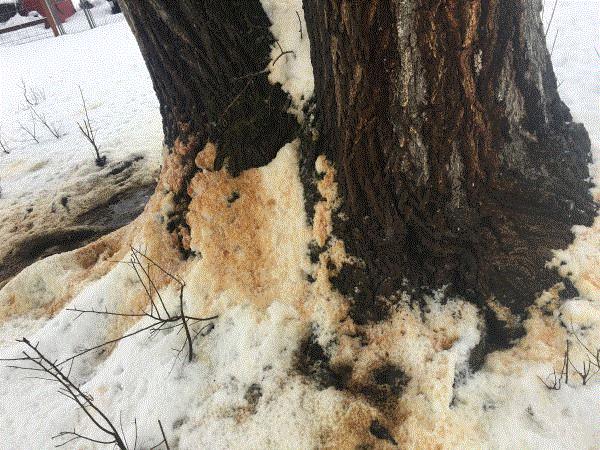

Black Root Rot in Spring Crops
Many of our spring crops are susceptible to black root rot caused by the fungus Berkeleyomyces basicola (formerly Thielaviopsis basicola). Black root rot is particularly prevalent in spring crops because it favors cool to moderate temperatures between 55 and 65F. This is a good time to think about black root rot if you plan to grow pansy, viola, snapdragon, petunia, calibrachoa, etc.
Jean Williams-Woodward of the University of Georgia recently published an e-GRO Alert that can help you with the planning. Go HERE for the article.
Black root rot can often be misdiagnosed because its initial symptoms, which include chlorosis and stunting, are similar to the results of nutritional deficiencies. Two characteristics may help you distinguish them.
First, symptomatic plants affected by black root rot are distributed randomly in a tray, whereas those affected by nutritional deficiencies are more uniformly distributed through the tray.
Secondly, disease-affected roots are darker in color, particularly at the root tips during initial infection. The root system is continuously ravaged by the disease, leading to a poorly developed root system that cannot support the entire plant. Infection by black root rot pathogen should be confirmed by microscopic examination, which may be best done by sending samples to a diagnostic lab.
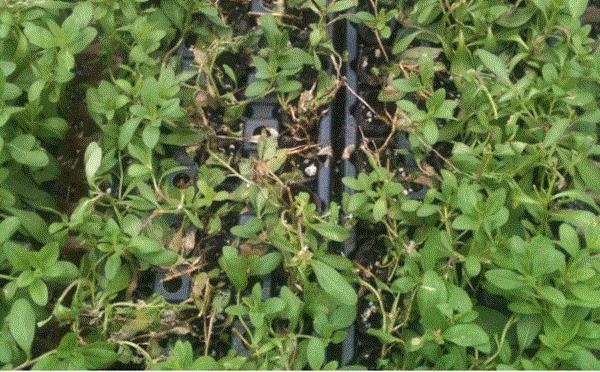
Calibrachoa plugs dying from black root rot infection shortly after arrival in a greenhouse. Even "healthy-looking" plants not showing symptoms are infected with black root rot at lower levels. (Photo credit: Jean Williams-Woodward, the University of Georgia.)
Don’t allow black root rot to appear in your greenhouse because it’s very hard to eradicate. You want to inspect all incoming shipments for black root rot or other diseases. I typically recommend throwing the entire tray away if disease infection is confirmed, but I know how y’all are. If you must keep the plugs, drench them with a fungicide (see below for Jean’s recommendations), but expect the disease to pop up again at some time during the crop. Use clean, unused trays or flats; sanitize if you want to reuse trays and containers. Never reuse potting media.
Just like all other root rot diseases, irrigation management will be critical in preventing or combatting black root rot. So is pH management. According to Jean, adjusting media pH to 5.6 or below (such as by using ammonium-based fertilizers) can help reduce (not eliminate) black root rot.
A preventive drench by using fungicides, such as thiophanate methyl (FRAC 1), on incoming plugs can help reduce black root rot severity. Jean suggested that a rotation program should include fludioxanil (12), mefentrifluconazole (3), polyoxin-D zinc salt (19) and triflumizole (3). My notes on recommendations from other pathologists also include some FRAC 11 fungicides, such as azoxystrobin and pyraclostrobin.
Go HERE for Jean’s e-GRO article on black root rot.

How Federal Budget Cuts May Impact Us
Our own Jen Zurko shared some information from AmericanHort’s latest Impact Washington newsletter, which contains some news and analysis of how federal government budget cuts may impact our industry. I’m keeping relatively close tabs on the news on this front because my current job with SePRO Corporation, a pesticide manufacturer, is intricately linked to the functioning of federal agencies, such as USDA and EPA.
The Trump administration’s 2025 budget proposal seeks to reduce federal spending by $2 trillion over the next 10 years. That means deep cuts to many federal government agencies. Some of the immediate actions at USDA include freezing loan or grant programs. Personnel termination has already occurred in some agencies, including the Farm Service Agency, Agricultural Research Service (ARS), the Animal & Plant Health Inspection Service (APHIS), and the Natural Resources Conservation Service. I know of at least three friends who'd been terminated from ARS and APHIS in the last two weeks.
As stated in the Impact Washington newsletter, “While the administration frames these cuts as a move to streamline government operations, critics warn they will weaken USDA’s ability to support farmers, process loans and implement conservation programs. The sudden dismissal of FSA loan officers could delay financial support for farmers, while the loss of ARS scientists may hinder agriculture research efforts nationwide.” And cuts to APHIS “directly affects many plant suppliers who produce unrooted cuttings and specialty cut flowers offshore and partner closely with APHIS to help inspect their production facilities and their live products to ensure they get to customers in the U.S. pest-free and in a timely manner.”
EPA’s 2024 budget is facing a cut of nearly $1 billion, with proposed cuts of $1.8 billion being passed by the House. Many EPA programs, grants and staff have been terminated. Cuts to the Office of Pesticide Programs, which I work with, will likely impact the speed by which new pesticides are approved. The cuts will also impact EPA’s ability to respond to litigation associated with pesticide registration.
The situation is fluid, but AmericanHort is monitoring the developments. Stay up to date by becoming a member of AmericanHort (go HERE) and signing up for the Impact Washington newsletter. AmericanHort asks you to contact Rachel Pick, Senior Manager of Advocacy & Government Affairs, (email HERE) if you're aware of how changes in USDA and EPA programs may negatively impact our industry.

Answer to "What the ... ?"
I think the bark was stripped by some hungry rodents. Look closely—y’all can even see tooth marks on the stem.
I’m not sure what kind of rodents, but according to Paul Pilon, they're common pests under overwintering blankets and structures. Go HERE for the October 2024 issue of Perennial Pulse where Paul talked about rodents and their management in overwintering faciliies. I don’t really have any experience managing rodents other than live trapping overwintering field mice from my wife’s art studio and, at my wife’s insistence, releasing them miles down the road.
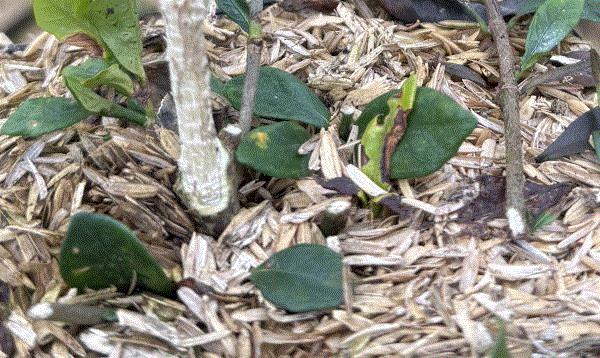
If relocating the rodents alive is not your preferred management approach, then you have the option of repelling them or baiting them. Repellents typically contain capsaisin or thiram. Repellents only keep rodents away from what you want to protect; you’ll need to reapply to keep the residue fresh and the repellency potent.
Baits, on the other hand, typically contain anti-coagulants, such as choropacinone or diphacinone. Please use anti-coagulant bait carefully because it’s toxic to all animals—it’s best to keep them in some kind of bait station that a puppy cannot get through. These baits are slow acting, so don’t expect the rodents and their damage to disappear within a day or two.
Go HERE for Paul’s discussion on rodent management in overwintering facilities.


See y'all later!

JC Chong
Technical Development Manager at SePRO
Adjunct Professor at Clemson University
This e-mail received by 27,847 subscribers like you!
If you're interested in advertising on PestTalks contact Kim Brown ASAP!